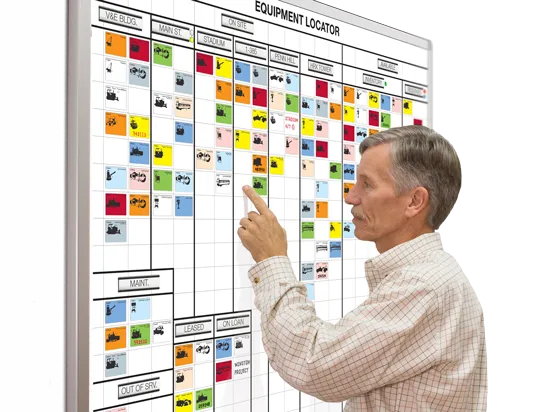In the dynamic landscape of project management, staying organized and on top of tasks is paramount. Enter tracking boards—an invaluable resource that has revolutionized the way teams coordinate and monitor project progress. By offering streamlined task management, improved collaboration, and enhanced accountability, tracking boards have become an essential tool for organizations seeking efficiency and transparency. This article delves into the concept of tracking boards, highlighting their benefits and discussing how they significantly enhance project management processes.
Understanding Tracking Boards
Definition of Tracking Boards: Tracking boards are visual tools that display project tasks and their respective statuses. They provide an overview of the project's progress, enabling team members to track tasks, identify bottlenecks, and ensure smooth workflow management.
Evolution and Adoption of Tracking Boards: Tracking boards have evolved from traditional whiteboards and sticky notes to digital platforms that offer advanced features and real-time collaboration capabilities. Their adoption has gained momentum across industries as more organizations recognize their value in project management.
Key Components of Tracking Boards: Tracking boards typically consist of columns representing different stages of task completion (e.g., "To Do," "In Progress," "Completed"). Tasks are represented as cards or sticky notes, allowing for easy visualization, reordering, and tracking of individual items.
Advantages of Tracking Boards
Improved Task Visibility and Organization: Tracking boards provide a centralized and visual representation of project tasks, ensuring everyone involved has clear visibility into the project's status and upcoming activities. This enhances organization and reduces the chances of tasks slipping through the cracks.
Enhanced Collaboration and Communication: By displaying tasks in a shared and accessible format, tracking boards promote collaboration among team members. They enable real-time updates, facilitate discussions, and ensure that everyone is on the same page.
Real-Time Progress Tracking and Reporting: Tracking boards allow teams to monitor task progress in real time. This provides valuable insights into project performance, highlights any delays or issues, and facilitates prompt decision-making and problem-solving.
Efficient Resource Allocation and Time Management: With tracking boards, project managers can easily assign tasks, allocate resources, and set deadlines. This helps optimize resource utilization, identify potential bottlenecks, and ensure timely completion of projects.
Types of Tracking Boards
Kanban Boards: Kanban boards are widely used for visualizing workflows and tracking progress. They employ cards or sticky notes that move across columns, representing different stages of completion.
Scrum Boards: Scrum boards are specifically designed for agile project management methodologies, allowing teams to track user stories, sprint progress, and backlog items.
Gantt Charts: Gantt charts offer a timeline-based view of tasks, dependencies, and project milestones. They provide a comprehensive overview of the project schedule and progress.
Agile Boards: Agile boards combine aspects of Kanban and Scrum boards, providing a flexible and adaptable approach to task management, ideal for dynamic projects.
Implementing Tracking Boards in Project Management
Selecting the Right Tracking Board for Your Project: Consider the project's nature, team size, and specific requirements when choosing a tracking board. Assess factors such as ease of use, customization options, and integration capabilities with existing tools and software.
Setting up and Customizing Tracking Boards: Once a tracking board is selected, customize it to reflect the project's workflow and stages. Define columns, labels, and any additional attributes relevant to your project.
Establishing Workflows and Task Management Systems: Define clear workflows, establish rules for task progression, and set guidelines for task ownership and responsibilities. This ensures a structured and efficient project management approach.
Conclusion
In today's fast-paced and interconnected world, tracking boards have emerged as a game-changer in project management. By providing a visual representation of tasks, fostering collaboration, and enabling real-time progress tracking, tracking boards empower teams to work more efficiently and effectively. As organizations strive for streamlined processes and improved project outcomes, embracing tracking boards can elevate project management to new heights. So, why wait? Anchor your project management endeavors with tracking boards and experience the transformative impact firsthand.


